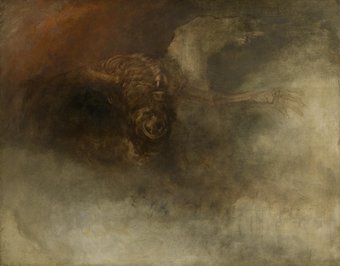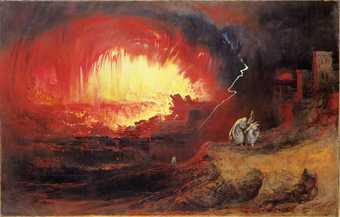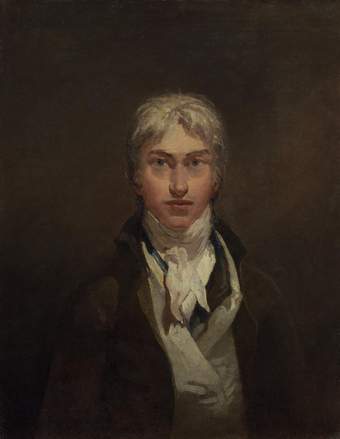Follow Turner’s artistic experimentation through unexhibited and unfinished works whose innovation often puzzled his contemporaries
The paintings in this room are selected from the many unfinished canvases found in Turner’s studio after his death. Not exhibited during the artist’s lifetime, they range from early oil sketches to luminous and ethereal late canvases reinventing earlier motifs. Subjects range from landscape to history. While some of the works appear more resolved than others, it is unlikely that Turner considered any of them exhibition-ready.
Although Turner made occasional forays into painting outdoors, he usually worked in his studio. Here he could experiment freely, testing out ideas in private. As Turner rarely discussed his working practices, they held a mystique for his artistic contemporaries. But his habit of finishing his pictures after they had been hung for exhibition at the Royal Academy provided a rare insight into his methods: final flourishes of paint transformed canvases and dazzled onlookers. The paintings shown here never received this final treatment.
Turner’s studio was equipped with a variety of brushes and palette knives: he worked the paint surface in countless ways to achieve contrasting effects. Contemporary accounts suggest he worked quickly, altering his compositions as he painted and often working on several canvases at the same time.



